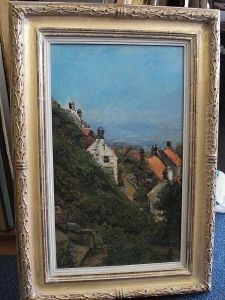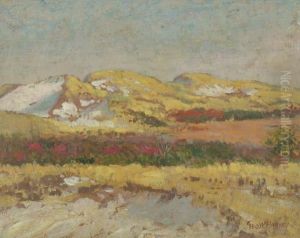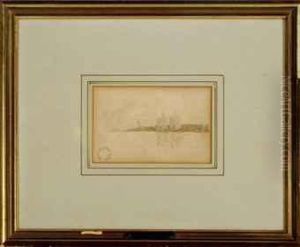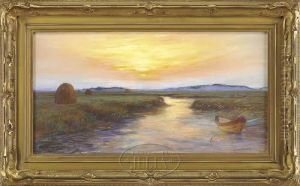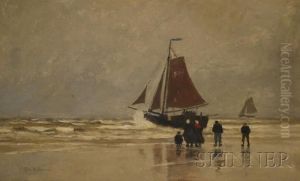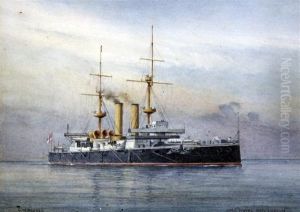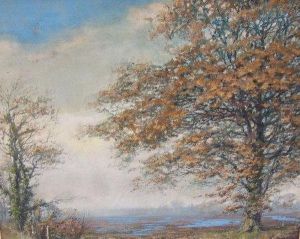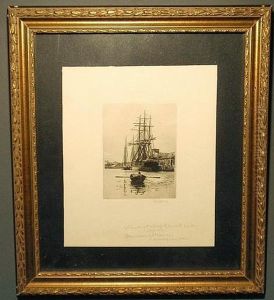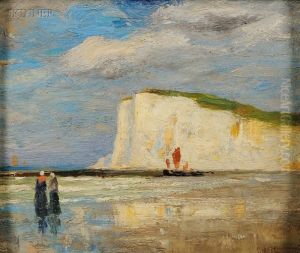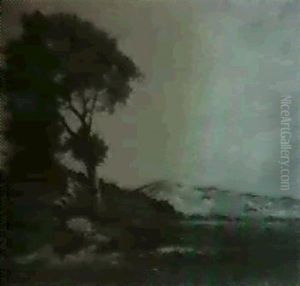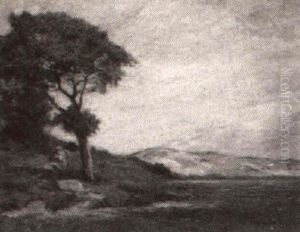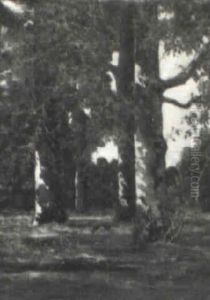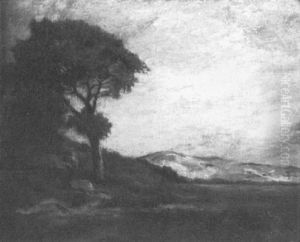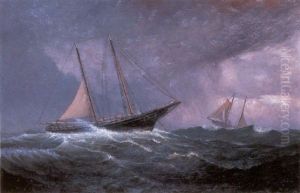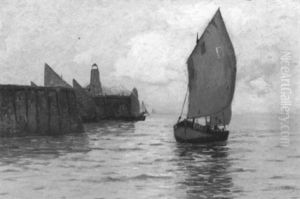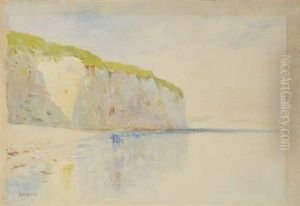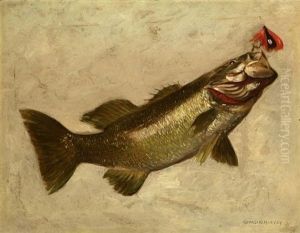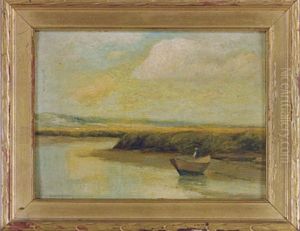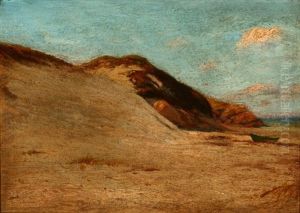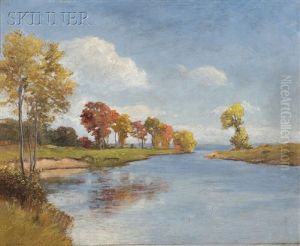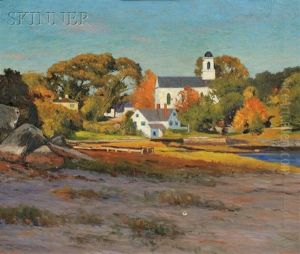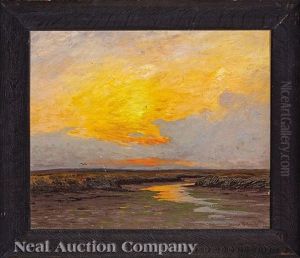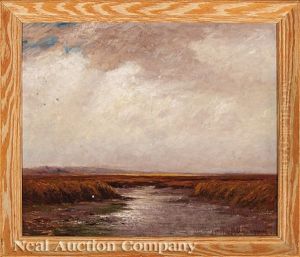George Wainwright Harvey Paintings
George Wainwright Harvey was an English painter known for his watercolor landscapes. Born on November 26, 1855, in Bridgwater, Somerset, England, Harvey showed an early interest in art. He studied at the Bridgwater School of Art and later attended the West of England School of Art in Bristol, where he honed his skills in painting.
Harvey's work primarily focused on the English countryside, capturing its various moods and the changing seasons with a particular emphasis on atmospheric effects and lighting. He was influenced by the English Romantic tradition, and his style can be compared to that of the likes of J.M.W. Turner, whose work also celebrated the sublime aspects of nature.
In the 1880s, Harvey began exhibiting his work, including at the Royal Academy and the Royal Institute of Painters in Water Colours, of which he became a member. His paintings were well received, and he gained a reputation for his evocative watercolors that conveyed a sense of tranquility and the ephemeral beauty of the landscapes he depicted.
Throughout his career, Harvey remained dedicated to his craft and continued to evolve his technique. He was a prolific artist, and his works were collected by various patrons across England. Despite his success, Harvey maintained a relatively private life, focused on his art and his affection for the English countryside.
George Wainwright Harvey passed away on July 21, 1930, leaving behind a legacy of beautiful, serene landscapes that continue to be appreciated for their contribution to English watercolor painting. His works remain of interest to collectors and art historians who study the late Victorian and Edwardian eras of British art.
